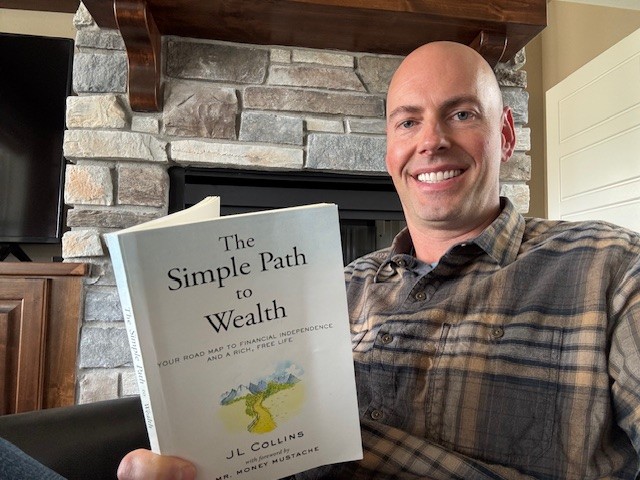
Book Written By: J.L. Collins
I recently came across The Simple Path to Wealth by J.L. Collins, a consistent top-seller in Amazon’s personal finance section. Its tagline, “Your roadmap to financial independence and a rich, free life,” intrigued me. The book distills Collins’s approach to finances, offering a unique perspective that diverges from the typical “optimization strategies” found in many books. Instead, his focus is set-it-and-forget-it investing with a saving at a high rate to achieve financial independence.
Through his years of experience, Collins demonstrates how having money readily available can bridge life’s inevitable gaps, providing a buffer and peace of mind. He advocates for readers to achieve the same, emphasizing the freedom that financial independence brings.
While I’m typically a kind reviewer, The Simple Path to Wealth boils down some financial principles to the bare bones, leaving some jagged edges on financial planning items. I have seen the benefits of a detailed approach in financial planning, and can’t overlook the details that can make a big difference. While Collins aims for simplicity, I feel he leaves out some valuable details on investing and personal finance.
One topic the author makes the path to wealth a bit too simple is asset allocation. In financial planning, I spend a considerable amount of time working with a client to find the right asset allocation for their investments. One of the biggest decisions on asset allocation is the percentage of stocks and bonds a client should invest in. Getting this right can help a client have confidence in the market ups and downs that they will be okay. Getting it wrong can lead to stress and possibly even panic selling in a market downturn, locking in the losses. The recommendation of the author is one allocation for everyone during working years and another for retirement. This is certainly simple, but leaves a bit to be desired as life is more of a gradual transition between the stages of life.
The Simple Path to Wealth is an easy-to-read introductory finance book; it is also a guide to rethink your relationship with money. Collins’s advice is straight forward and applicable to working toward achieving the freedom and security of financial independence.



